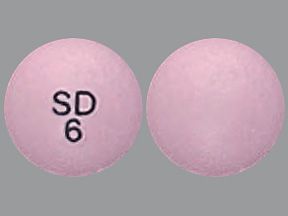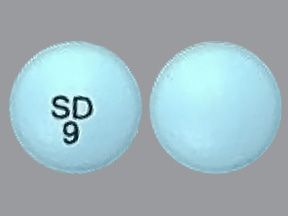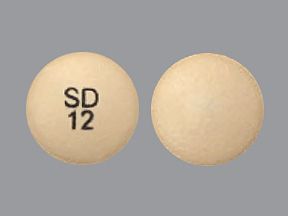Austedo (deutetrabenazine) is a brand-name prescription medication. The Food and Drug Administration (FDA) has approved it to treat the following conditions in adults:
- tardive dyskinesia
- chorea that’s related to Huntington’s disease
The drug comes as an oral tablet. And it’s in a group of medications called selective vesicular monoamine transporter 2 inhibitors.
Austedo is not currently available as a generic version.
Dosage summary
The following chart summarizes Austedo’s dosage. Your doctor will determine the dosage that’s best for you.
| Austedo form | Strengths | Typical starting dosage | Maximum dosage |
| oral tablet | • 6 milligrams (mg) • 9 mg • 12 mg | 6 mg twice per day for a total of 12 mg daily | 24 mg twice per day for a total of 48 mg daily |
For information about the dosage of Austedo, including its strengths and how to take the drug, keep reading. For a comprehensive look at Austedo, see this article.
This article describes typical dosages for Austedo provided by the drug’s manufacturer. When taking Austedo, always follow the dosage prescribed by your doctor.
Below describes the drug manufacturer’s recommended dosages of Austedo.
Austedo form
Austedo comes as an oral tablet.
Austedo strengths
Austedo comes in three strengths:
- 6 milligrams (mg)
- 9 mg
- 12 mg
Typical dosages
Typically, your doctor will prescribe you a low dosage of Austedo. Then they’ll adjust the dosage over time to reach the amount that’s right for you. Your doctor will ultimately prescribe the smallest dosage that provides the desired effect.
The following information describes dosages that are commonly taken or recommended. However, be sure to take the dosage your doctor prescribes for you. Your doctor will determine the best dosing schedule to fit your needs.
Dosage for tardive dyskinesia (TD)
To treat TD, the recommended starting dosage of Austedo is 6 mg twice per day. This is a total of 12 mg daily.
Your doctor will typically increase your total daily dose by 6 mg each week. This depends on how your body responds to the drug and if you have any side effects. They may increase your dose up to a maximum dose of 24 mg given twice per day. This is a total of 48 mg daily.
Dosage for chorea that’s related to Huntington’s disease
To treat chorea that’s related to Huntington’s disease, the recommended starting dosage of Austedo is 6 mg twice per day. This is a total of 12 mg daily.
Your doctor will typically increase your total daily dose by 6 mg each week. This depends on how your body responds to the drug and if you have any side effects. They may increase your dosage up to a maximum dosage of 12 mg twice per day. This is a total of 48 mg daily.
Long-term treatment
Austedo is meant to be taken as a long-term treatment. If you and your doctor determine that Austedo is safe and effective for you, you’ll likely take it long term.
If you have questions about how long you’ll take Austedo, talk with your doctor.
The Austedo dosage your doctor prescribes will depend on several factors. These include:
- the type and severity of the condition you’re using Austedo to treat
- if you’re switching from a different medication to Austedo
- any side effects you may experience from Austedo*
- how your body responds to Austedo
Other medical conditions you have can also affect your Austedo dosage.
* For more information about side effects of Austedo, see this article.
Dosage adjustments
Your doctor may adjust your dosage if you’re switching from a drug called tetrabenazine (Xenazine). In this case, they’ll prescribe the recommended dosing schedule based on your original dosage of tetrabenazine.
If you have questions about dosage adjustments with Austedo, talk with your doctor.
Austedo comes as an oral tablet. You should swallow the tablets whole. Do not crush, break, or chew the tablets. You should also take your Austedo dose with food.
If you have trouble swallowing tablets, see this article for tips on how to take this form of medication. You can also talk with your doctor or pharmacist.
Usually, you’ll take your Austedo dose two times per day. It may be helpful to take Austedo around the same time of day, such as taking a dose in the morning and the other dose in the evening. This helps maintain a steady level of the drug in your body so Austedo can work effectively. However, be sure to take Austedo exactly as your doctor prescribes it.
Until you know how your body responds to your Austedo dosage, be careful performing tasks that require you to be alert. These may include driving or operating heavy machinery. This is because Austedo can cause you to be tired or have reduced reaction time.
If you have questions about how to take Austedo, talk with your doctor.
ACCESSIBLE DRUG LABELS AND CONTAINERSIf you’re having trouble reading your prescription label, talk with your doctor or pharmacist. Some pharmacies offer labels with large print, braille, or a code you scan with a smartphone to convert text to speech. If your local pharmacy doesn’t have these options, your doctor or pharmacist might be able to recommend a pharmacy that does.
If you’re having trouble opening medication bottles, ask your pharmacist about putting Austedo in an easy-open container. They also may recommend tools that can make it easier to open bottles.
If you miss your dose of Austedo, take it as soon as you remember. However, if it’s close to the time to take your next dose, skip the missed dose. Then, take your next dose at the regularly scheduled time.
You should not take two doses of Austedo at once. Doing so can increase your risk of serious side effects. (For more information about side effects of Austedo, see this article.)
If you miss your Austedo dose for more than 1 week, do not take another dose until talking with your doctor. They may restart your Austedo treatment with a different dosage.
To help make sure that you don’t miss a dose, try using a medication reminder. This can include setting an alarm or using a timer. You could also download a reminder app on your phone.
If you take more Austedo than your doctor prescribes, you may develop serious side effects. It’s important that you don’t take more Austedo than your doctor advises.
Symptoms of an overdose
Overdose symptoms of Austedo can include:
- nausea and vomiting
- sweating
- low blood pressure
- confusion
- diarrhea
- hallucinations
- redness or discoloration of the skin
- tremors
- tiredness
- rolling of your eyes upward and back
- involuntary muscle spasms
If you take more than the recommended amount of Austedo
Call your doctor right away if you believe you’ve taken too much Austedo. Another option is to call the American Association of Poison Control Centers at 800-222-1222 or use its online tool. If you have severe symptoms, immediately call 911 or your local emergency number, or go to the nearest emergency room.
The dosages in this article are typical dosages provided by the drug manufacturer. If your doctor recommends Austedo for you, they’ll prescribe the dosage that’s right for you. If you have questions about the dosage of Austedo that’s best for you, talk with your doctor.
Besides learning about dosage, you may want other information about Austedo. These additional articles might be helpful to you:
- More about Austedo. For information about other aspects of Austedo, refer to this article.
- Side effects. To learn about side effects of Austedo, see this article. You can also look at the Austedo prescribing information.
- Drug comparison. Find out how Austedo compares with Ingrezza and Xenazine.
- Details about your condition. For details about tardive dyskinesia and chorea see our list of neurology and neuroscience articles.
Disclaimer: Medical News Today has made every effort to make certain that all information is factually correct, comprehensive, and up to date. However, this article should not be used as a substitute for the knowledge and expertise of a licensed healthcare professional. You should always consult your doctor or another healthcare professional before taking any medication. The drug information contained herein is subject to change and is not intended to cover all possible uses, directions, precautions, warnings, drug interactions, allergic reactions, or adverse effects. The absence of warnings or other information for a given drug does not indicate that the drug or drug combination is safe, effective, or appropriate for all patients or all specific uses.



